For long, cold winter evenings, I offer you this delicious, comforting wonton soup recipe which, in addition to being authentic, is extremely easy to make.
Wonton soup is one of the great classics of Chinese cuisine. Along with roast duck, beef with onions, and jiaozi, it is one of those dishes that most French speakers recognize, at least by name. Special mention goes to Ha Kao, although many people do not know its Chinese name.
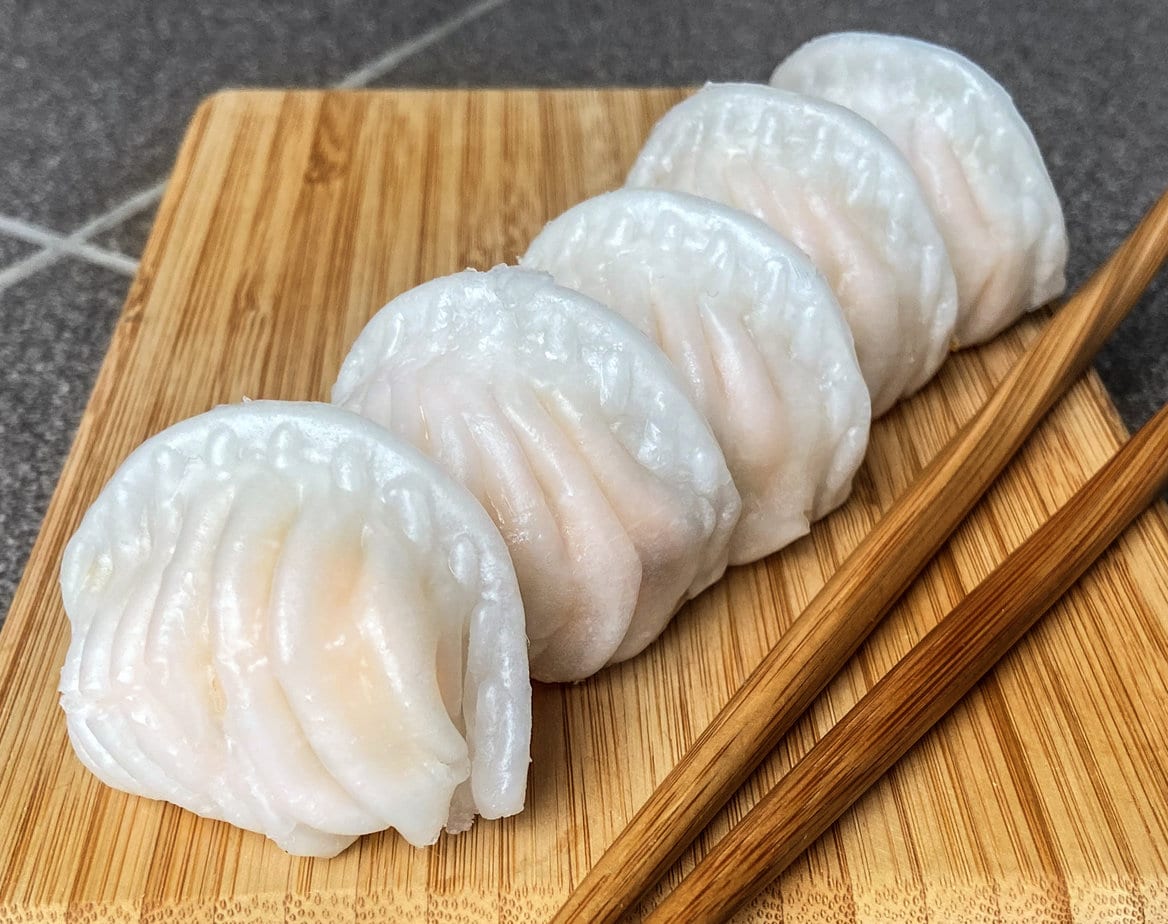
If you have never tried this famous Chinese dumpling soup but are willing to give it a go, I am honored to introduce it to you. I cannot wait to hear your feedback!
I have put together a complete tutorial, right down to the folding, with plenty of step-by-step photos. So you have no excuse not to try the recipe!
What is wonton soup?
Originating in China, this dish is an aromatic broth filled with boiled dumplings called “wontons.” You can find it in several variations; some even include noodles:
1. Canton Wonton Soup (Guangdong) Region of origin: Canton, Guangdong Province, China. Characteristic: Its wontons are filled with minced pork and shrimp, and the clear broth is flavored with chicken, dried shrimp, and other aromatics.
2. Sichuan Wonton Soup (Spicy Wontons) Region of origin: Sichuan Province, China. Characteristic: The wontons are served in a spicy sauce made with chili paste, garlic, and sesame oil. It is not really a soup in the traditional sense, but it is very tasty and quite hot. Calling it a soup might be a stretch, but you get the idea.
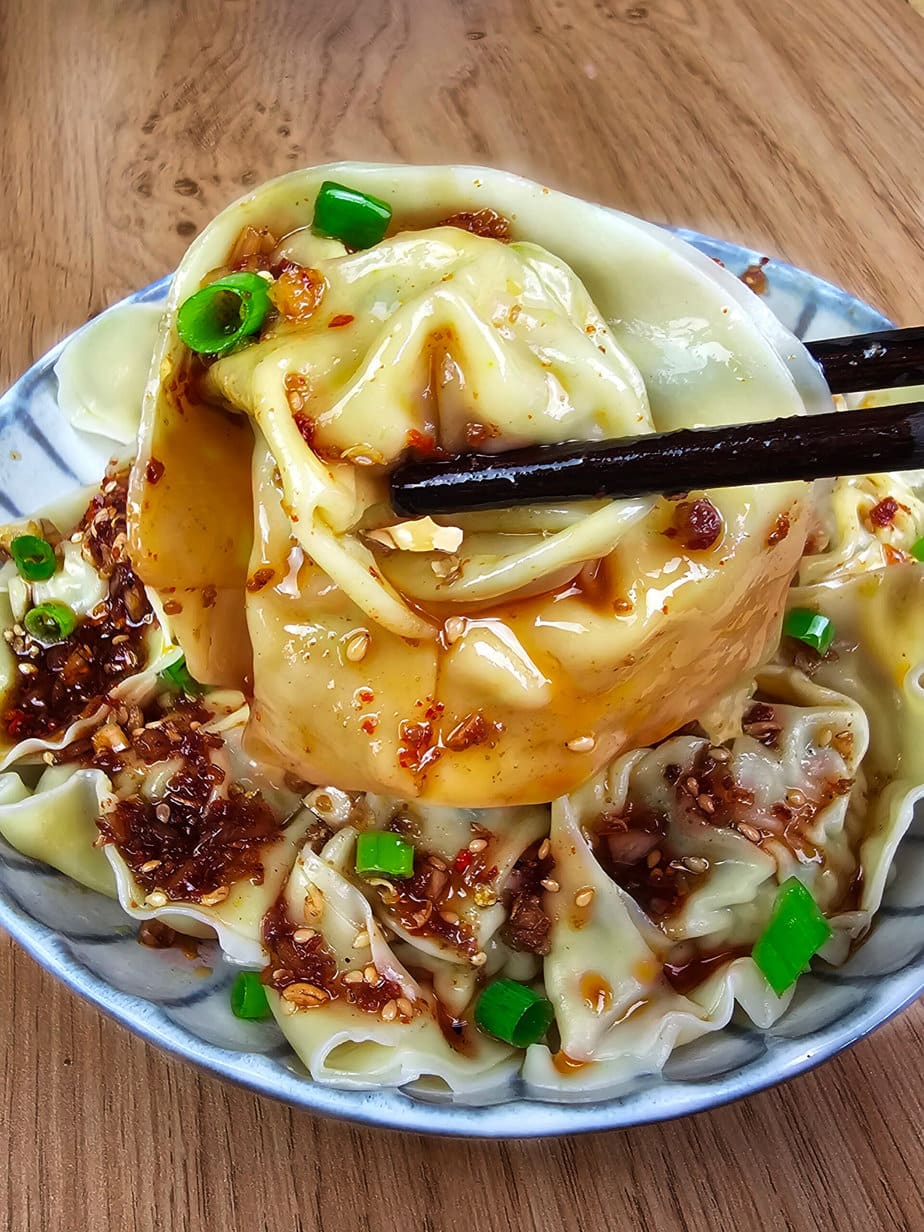
3. Shanghai Wonton Soup Region of origin: Shanghai, China. Characteristic: Shanghai wontons are usually smaller and filled with minced pork. The broth is made with pork and chicken and is often garnished with leafy greens.
4. Hong Kong Wonton Soup Region of origin: Hong Kong. Characteristic: The wontons are typically filled with whole shrimp and pork, and the clear broth is flavored with dried fish, reminiscent of Japanese dashi.
The recipe I am sharing with you today is inspired by the Shanghai style.

The steps of the wonton soup recipe
The broth and the wonton wrappers
When it comes to the broth, I strongly recommend making it at home. It is quite easy and tastes much better, but you can also use a good-quality store-bought stock (or even a stock cube, I’m not judging).
The wrappers… that’s another story. They take a bit of time to make – I will publish a recipe – but honestly, if you have an Asian supermarket nearby, you are better off spending a few euros on frozen wrappers. The difference in taste is barely noticeable.
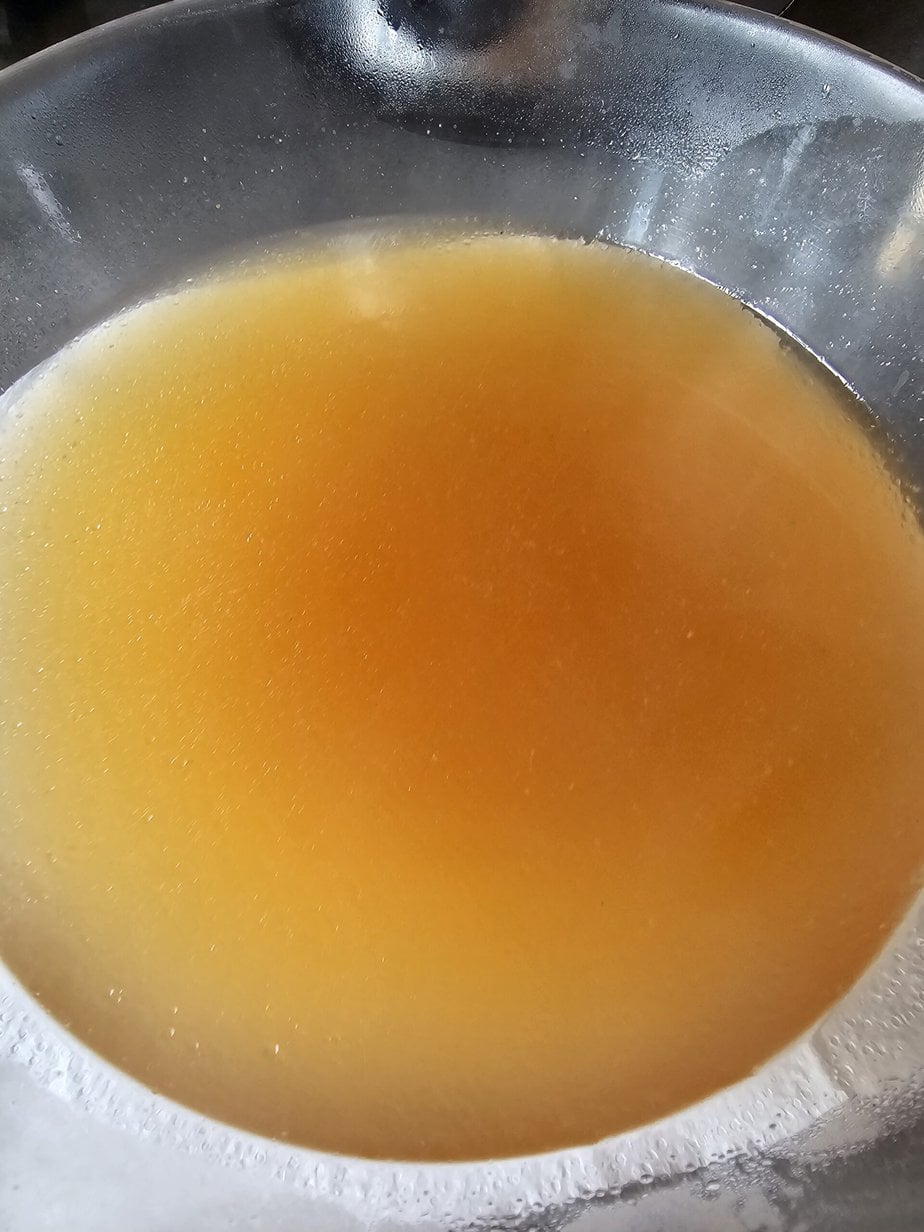
The filling
Traditionally, minced pork is used, but you can also use chicken (please, thigh meat, not breast) or beef. Use whatever you like, but remember the flavor will change.
Personally, I like a fairly fatty filling, so I recommend 30%-fat mince or, if you have a grinder, some fresh unsalted pork belly. That will do the trick.
The first step is to mix the liquid ingredients, such as soy sauce and Shaoxing wine, with the seasonings, like salt, ginger, and spring onions. The goal is to create a highly aromatic liquid before adding the meat.
The final seasoning
This is the finishing touch you can customize to suit your taste: a little chili oil or sesame oil, sliced spring onions, scallion oil, and so on. If you spot Chiu Chow sauce at the store, grab it; it is my favorite garnish, but be warned, it is very spicy.
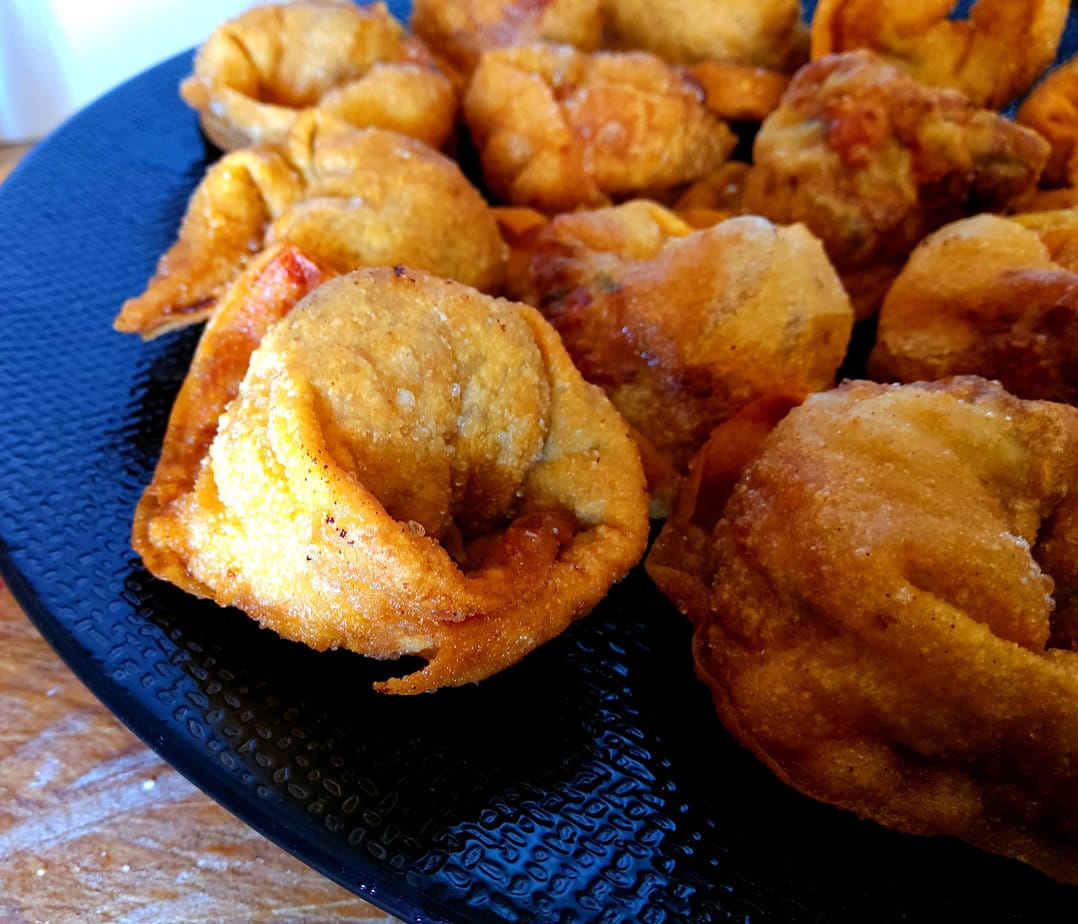
Where to buy wonton wrappers?
You can find them in any Asian grocery store. There is a white version and a yellow (egg) version, and both work.
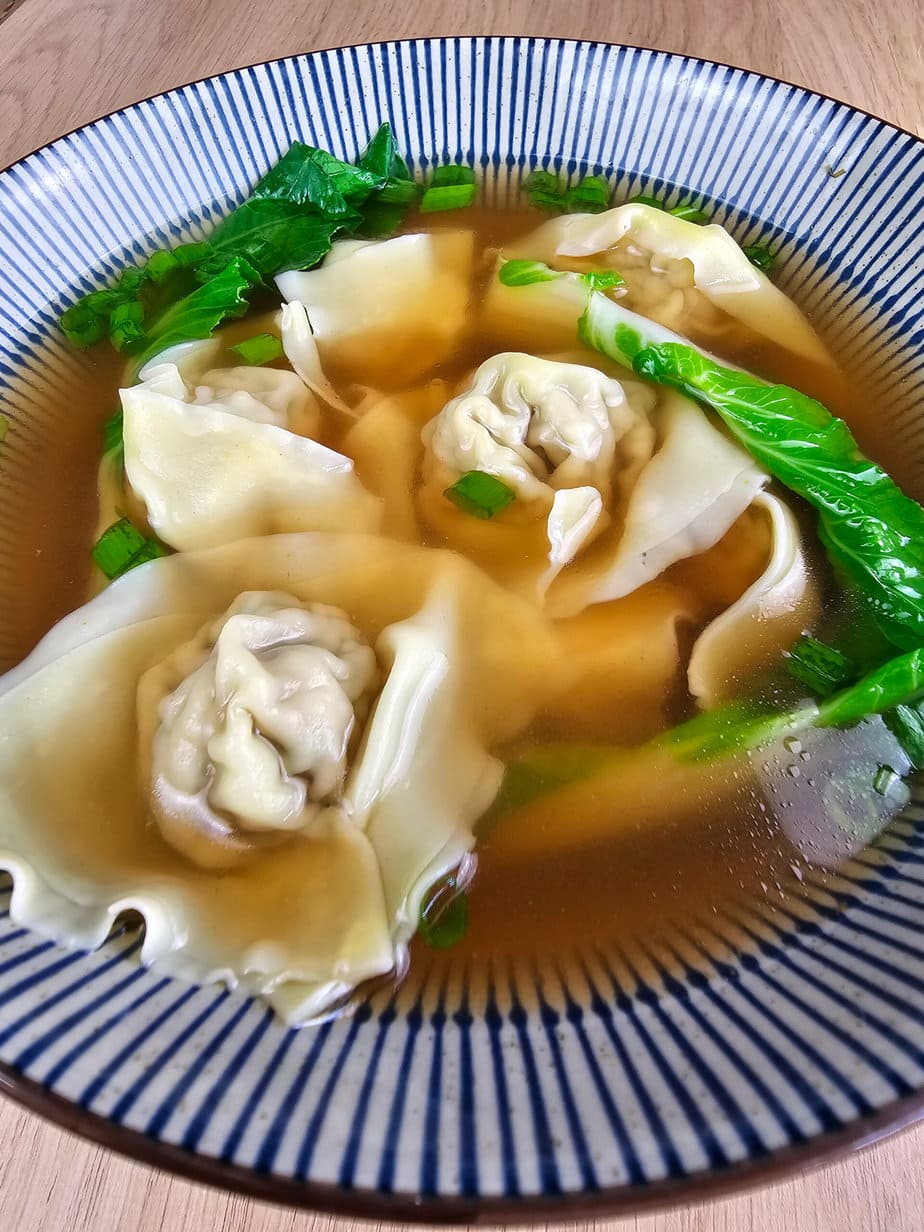
Authentic Wonton Soup – 馄饨汤
Ingredients
For the wontons
- 30 wrappers ready-made wonton wrappers
For the filling
- 300 g minced pork preferably 30% fat
- 2 stalks finely sliced green onions
- 1 teaspoon minced ginger
- 1 tablespoon light soy sauce
- 1 teaspoon Shaoxing wine
- 0.25 teaspoon salt
- 1 pinch white pepper
- 3 tablespoon chicken broth
For the soup
- 2 liters of chicken broth homemade or store-bought
- 2 heads of baby bok choy you can use Chinese cabbage as well
- Salt to taste
- White pepper to taste
- Sesame oil to taste
- Thinly sliced green onions for garnish
- Chili oil optional
For the broth
- 2 liters of water
- Chicken bones as many as you can find
- 3 spring onions
- 3 cloves crushed garlic
- 3 slices of ginger
- 1 halved onion
Instructions
For the chicken broth
- (optional) Roast the bones in the oven or air fryer at 190°C for 5 minutes
- Bring the water with the bones to a boil. Discard the water, rinse, then return the bones to the pot with fresh water. Lower the heat to maintain a gentle simmer just below boiling.
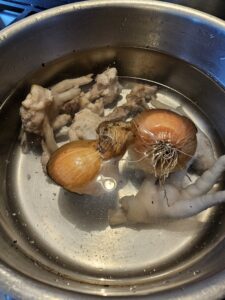
- Simmer for 1 hour 30 minutes, skimming the surface regularly.
- Add the remaining ingredients and simmer, covered, for another 40 minutes.
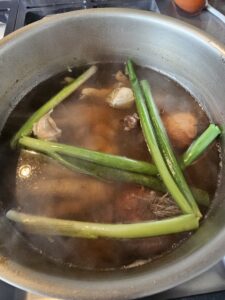
- Strain and set aside.

For the filling
- Mix all the filling ingredients except the meat together and let them infuse for 10 minutes

- Add the meat and stir continuously until it absorbs all the liquid and becomes a sticky paste.
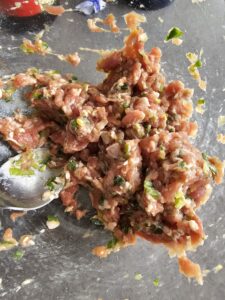
Folding the wontons
- Using your fingertip, moisten the edges of a wonton wrapper with a little water.

- Place a small amount of pork filling in the center.

- Fold the wrapper into a rectangle.

- Press to seal the edge.
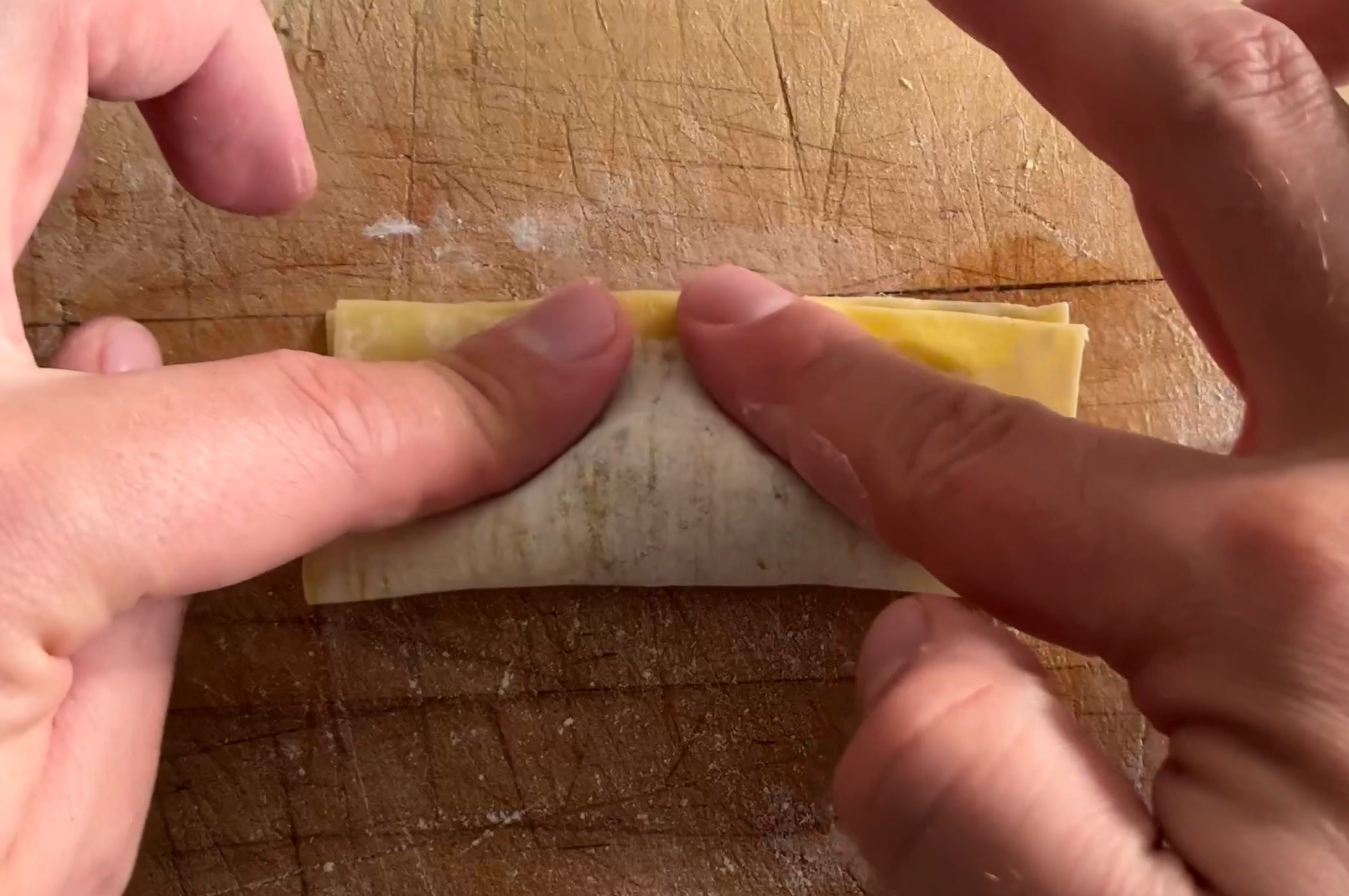
- Starting from the folded side, moisten one corner then place the opposite corner over it.
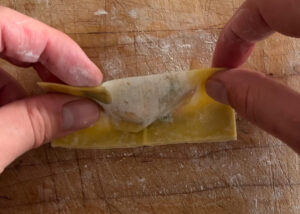
- Press to seal (see the video below).
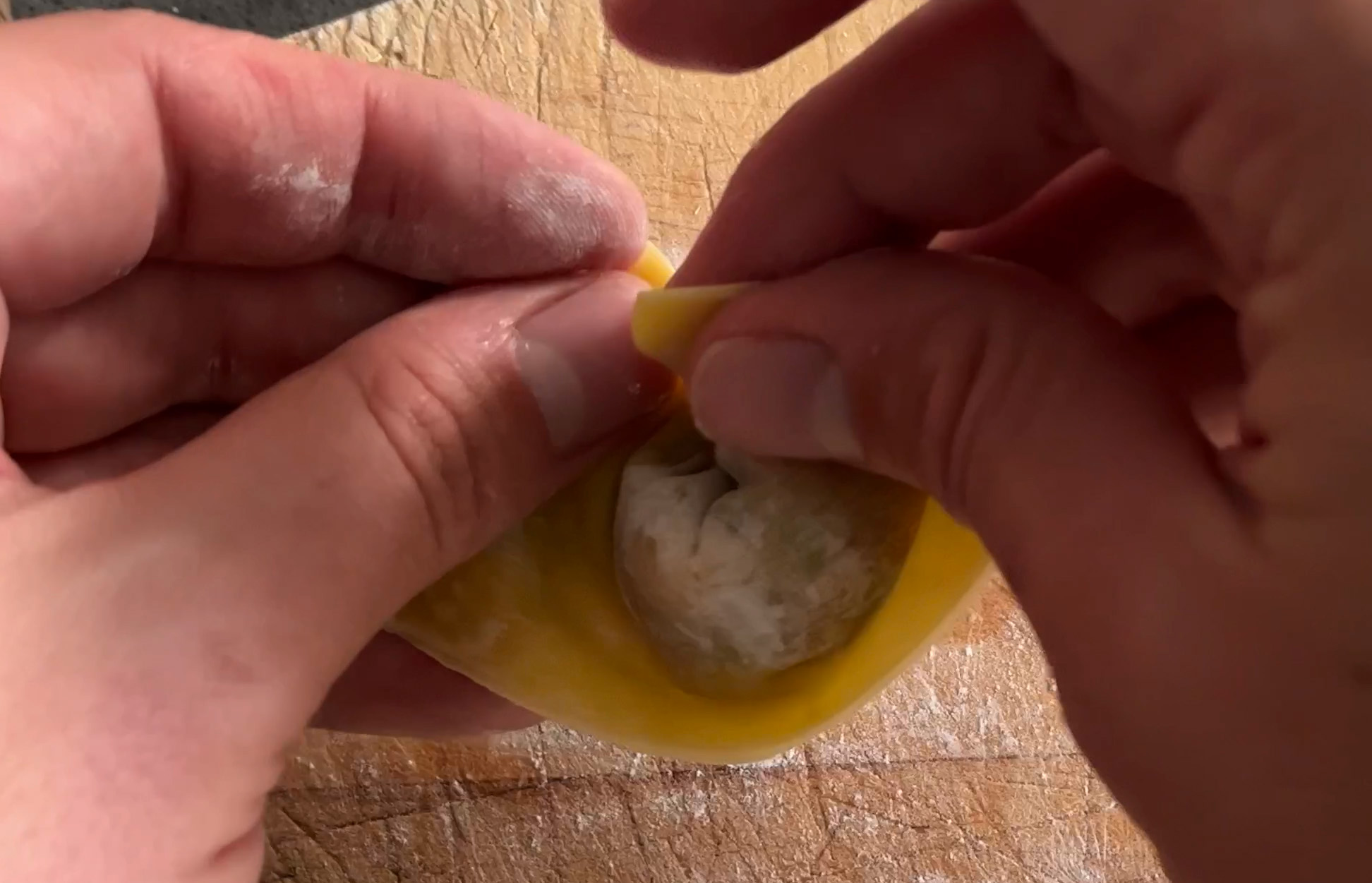
- In a saucepan, bring the chicken broth to a boil. Set aside for later use.
Cooking the wontons
- While the broth is heating, bring a large pot or wok of water to a boil. Gently drop the wontons into the boiling water. Stir them with a spoon to prevent sticking. You may need to cook them in batches

- When the wontons float to the surface (or after 6–7 minutes), continue boiling for about 1.5 more minutes. Add the bok choy and cook for an additional 30 seconds.

Assembling the dish
- Add salt, ground white pepper, and sesame oil to the serving bowls, then fill each one with the hot broth.
- Remove the wontons and bok choy from the water and place them in the bowls. Garnish with green onions and chili oil (if desired).
Video
Notes
Nutrition
I used the Red House Spice recipe as a starting point, tweaking the way the aromatics are infused and increasing the amount of filling (I like my wontons nice and plump). I also prefer a more intense, amber-colored broth.

